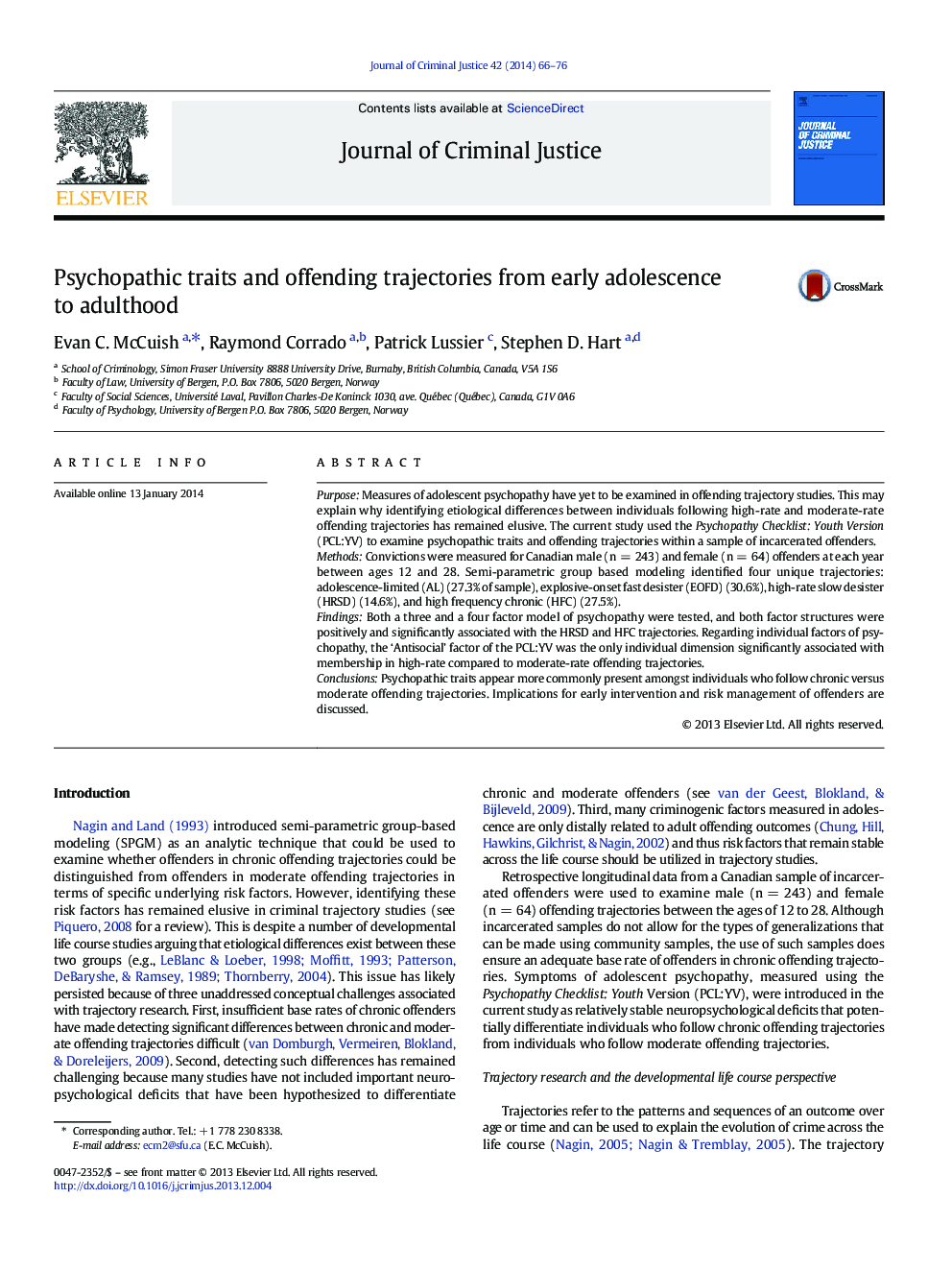| Article ID | Journal | Published Year | Pages | File Type |
|---|---|---|---|---|
| 882725 | Journal of Criminal Justice | 2014 | 11 Pages |
•Group based modeling examining offense trajectories and psychopathy•Accounting for exposure time, four offending trajectories were identified•Males more likely than females to be in the highest-rate offending trajectories•Higher psychopathy scores were associated with frequent offending trajectories•‘Antisocial’ facet most common trait of high-rate offending trajectory
PurposeMeasures of adolescent psychopathy have yet to be examined in offending trajectory studies. This may explain why identifying etiological differences between individuals following high-rate and moderate-rate offending trajectories has remained elusive. The current study used the Psychopathy Checklist: Youth Version (PCL:YV) to examine psychopathic traits and offending trajectories within a sample of incarcerated offenders.MethodsConvictions were measured for Canadian male (n = 243) and female (n = 64) offenders at each year between ages 12 and 28. Semi-parametric group based modeling identified four unique trajectories: adolescence-limited (AL) (27.3% of sample), explosive-onset fast desister (EOFD) (30.6%), high-rate slow desister (HRSD) (14.6%), and high frequency chronic (HFC) (27.5%).FindingsBoth a three and a four factor model of psychopathy were tested, and both factor structures were positively and significantly associated with the HRSD and HFC trajectories. Regarding individual factors of psychopathy, the ‘Antisocial’ factor of the PCL:YV was the only individual dimension significantly associated with membership in high-rate compared to moderate-rate offending trajectories.ConclusionsPsychopathic traits appear more commonly present amongst individuals who follow chronic versus moderate offending trajectories. Implications for early intervention and risk management of offenders are discussed.
